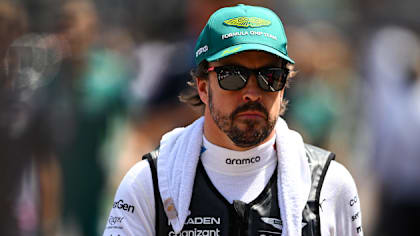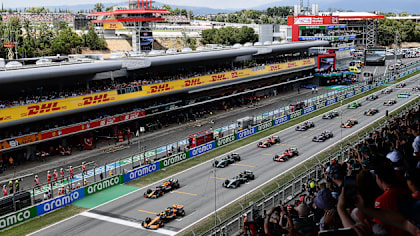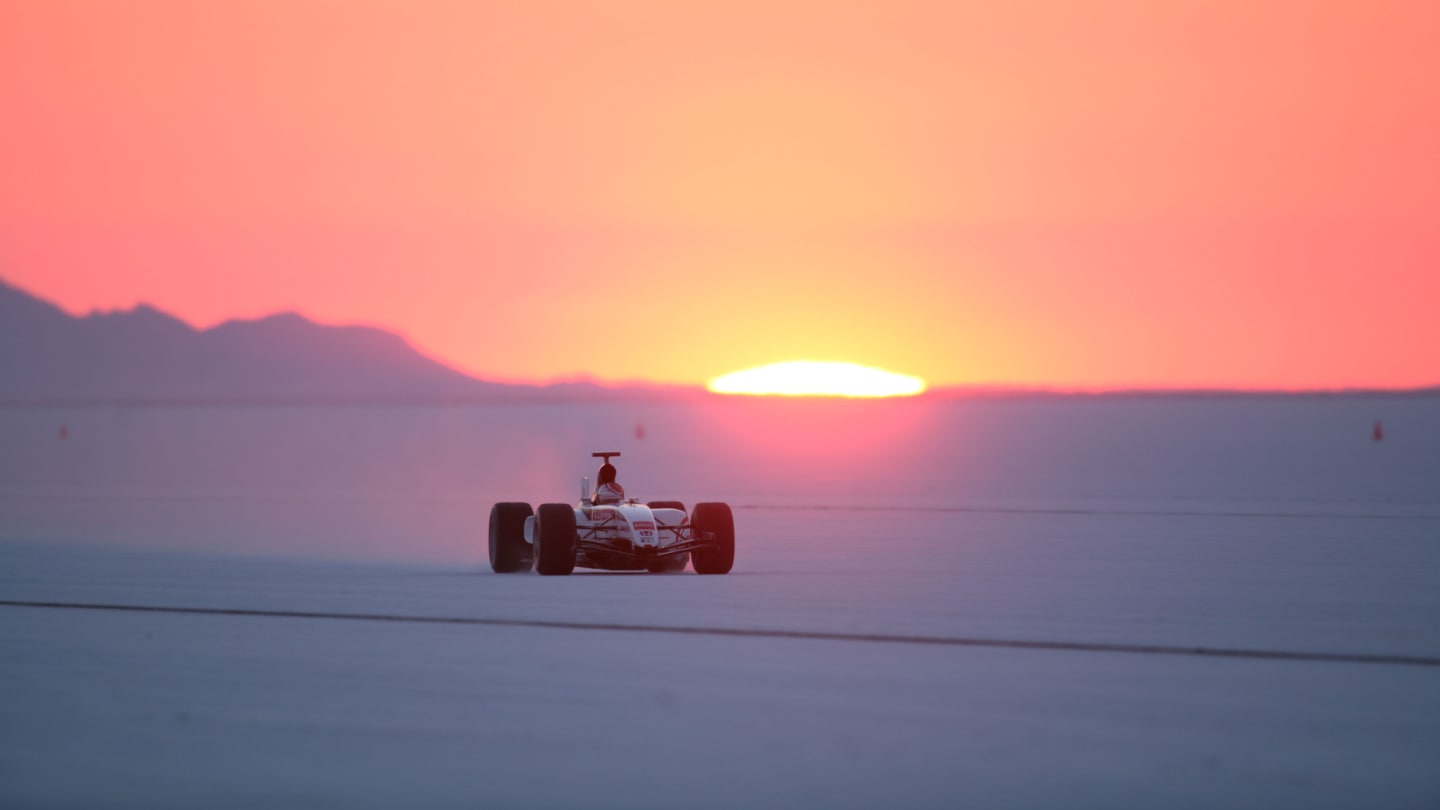
30 May - 01 June
Feature
The long read: Chasing 400km/h in the world’s fastest F1 car
Share

It was one of the most ambitious F1 engineering efforts of all time. The mission? Ultimate speed. Over a decade on, we remember Honda’s extraordinary Bonneville 400 project, a quest that saw F1 machinery driven to previously unheard of velocity…
Pop quiz: who’s the fastest driver in the F1 paddock? Those with a literal mind might go for Valtteri Bottas. According to Williams, the Finn hit an incredible 378km/h (234.9mph) during practice on the streets of Baku last year. But it isn’t him. In fact the driver in question has never so much as started a Grand Prix - it’s FIA Medical Car driver Alan van der Merwe.
Allow us to explain…
Back in 2006, during his time as a test driver for Honda, the South African became involved in one of the stranger side projects to be attempted by a Formula One team - the quest for 400km/h (248.5mph). On paper, the brief was simple: take a virtually standard F1 car (the very same machine that had been raced by Jenson Button and Takuma Sato in 2005) to Utah’s world famous Bonneville Salt Flats and see how fast it could go over a flying mile.
The answer, it turned out, was an FIA-sanctioned Formula One land speed record of 397.360km/h, though in testing in the Mojave Desert it hit a staggering 413.205km/h.

A ridiculous idea
The project was conceived in ignorance, Van der Merwe explains with a wide smile. “We knew it was a ridiculous idea because the marketing department [at BAR-Honda] had come up with this magic number of 400km/h.
“We’d said it wasn’t possible: the cars do the speed they do on the track – 360-370km/h with a tow – and that’s it: you can’t make them go faster. They said ‘Just add more horsepower’ – but it’s not a case of simply turning a screw and adjusting a valve here and there. We thought we’d need to double the horsepower to achieve 400km/h.”
Fortunately for the record books, F1 engineers tend to get highly motivated when told something can’t be done. Over two years, with numerous blind alleys, false starts and a steep learning curve, the project gained in knowledge and credibility - culminating with the final runs on June 21, 2006, when the current records for the flying mile and flying kilometre were set.
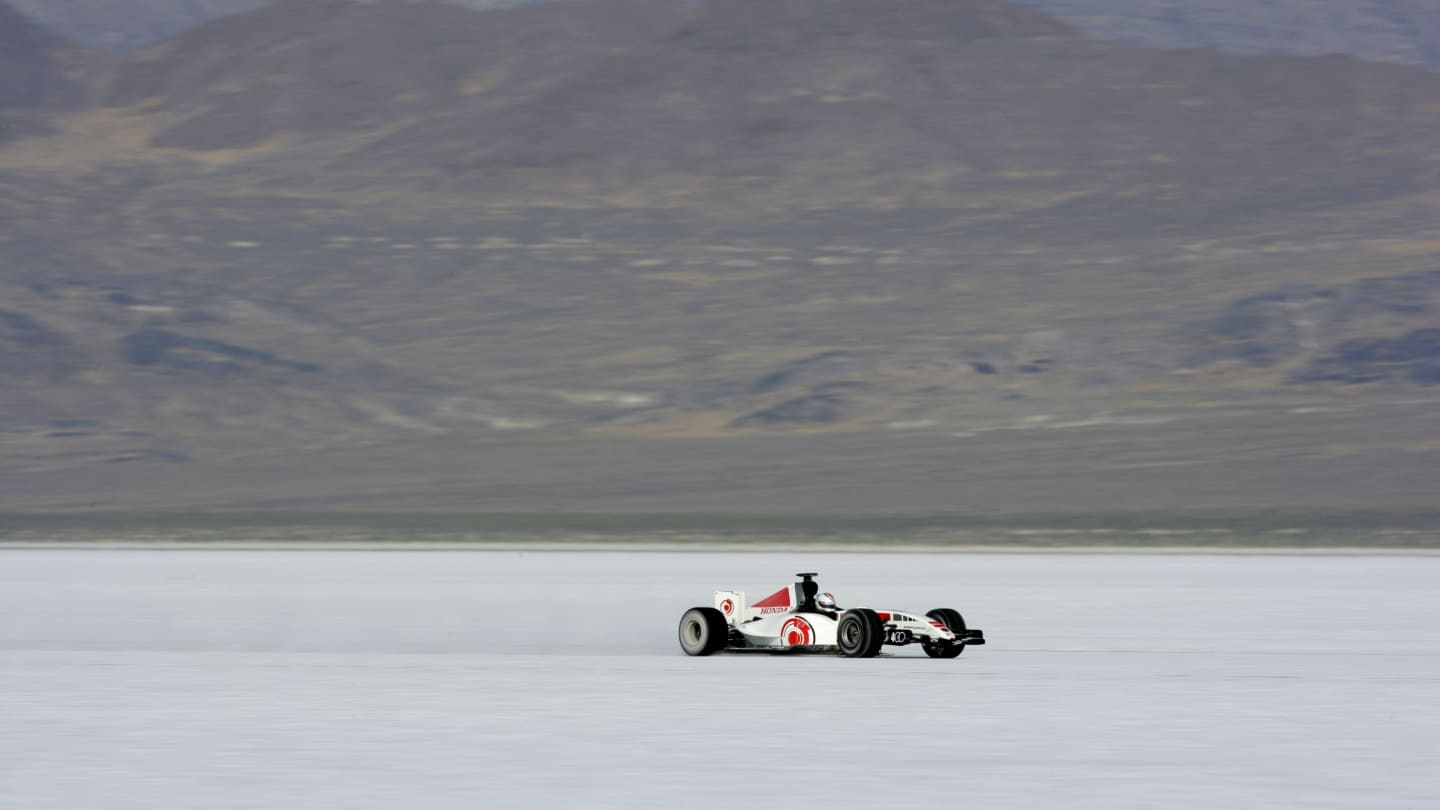
The wrong tool for the job
Initially, testing with the V10-engined car (a BAR 007, rechristened as a Honda RA106 when the Japanese company assumed ownership of the F1 team at the end of 2005) saw it run in something approximating Monza-spec low-downforce trim. Subsequently the car achieved a distinctiveness of its own when the rear wing was replaced by a stability fin. Otherwise it was, to all intents and purposes, the car that had finished the 2005 F1 season - and therefore something fundamentally unsuited to land speed record work on the dusty desert pavement in Mojave where running started. It was, says Van der Merwe, “the wrong tool for the job.”
“When we first opened the tail-lift [at Bonneville] the regulars were laughing. They are used to throwing down power and weight and we turn up with this tiny, precise machine. They found it hilarious. And sure enough, at first we couldn’t get the thing out of first gear. The ECU couldn’t handle that much wheel-spin. The car was too light, with huge, balloon tyres on slippery salt. It put everyone’s hopes on the floor.”
The Bonneville 400 team learnt on the job and the car began to perform and, in the cockpit, Van der Merwe began to experience higher and higher speeds - though experience may perhaps be the wrong word...
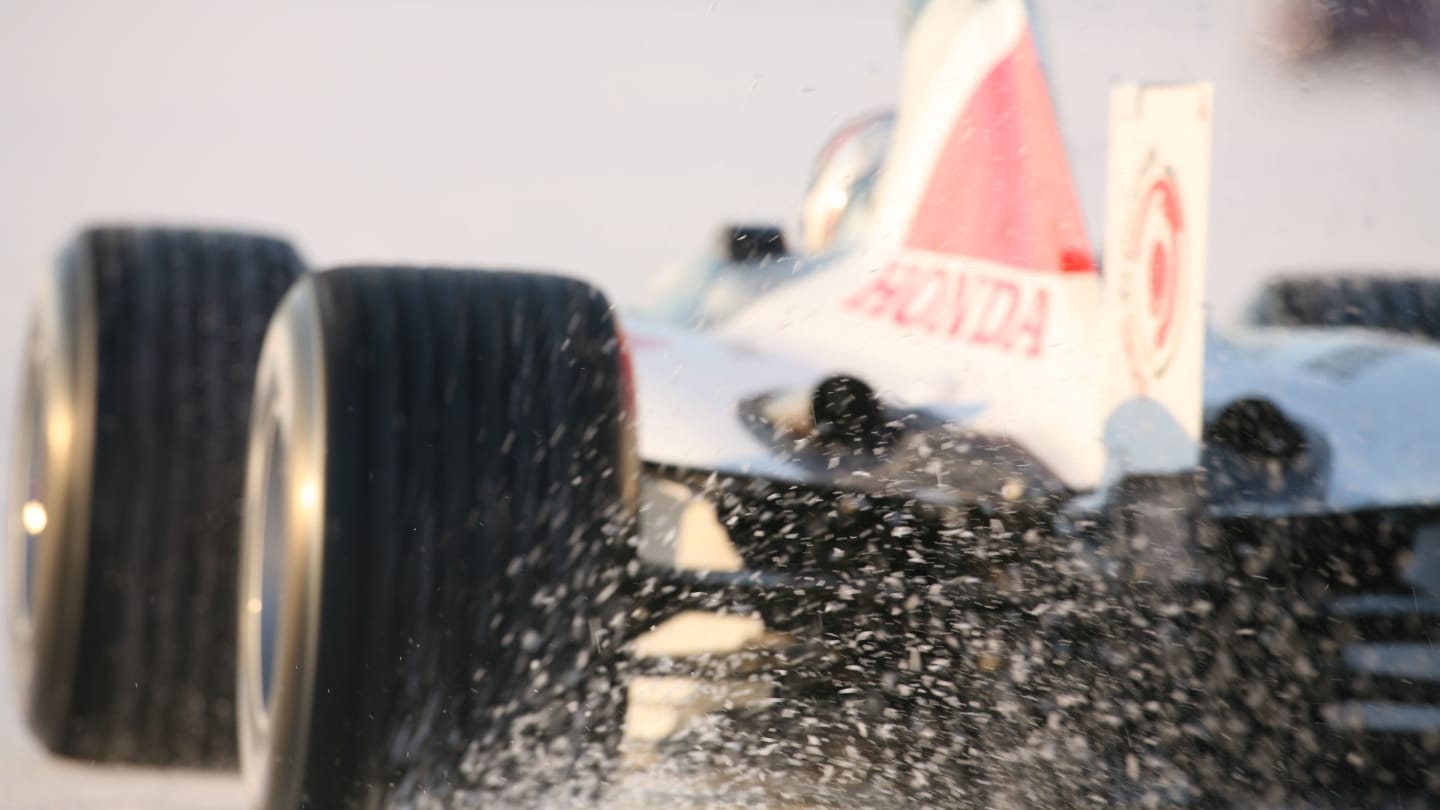
Pulling like crazy
“This is the funny thing: the first time I ran the car in its final spec was an aero test at RAF Lyneham in the UK. My engineer asked me to do a run at 280km/h. My dash showed temperatures and pressures – not speed – so I accelerated up to what I thought was 280km/h-ish and came back in. He told me I’d done 360km/h.
“I misjudged it because the car was still accelerating so hard. It taught me about what we use as references: the car accelerates and then tails off and you feel extra drag if you’re near the limit for the gear you’re in, but this thing had massively long gears. I was probably in fourth or fifth and it was still pulling like crazy so I assumed it was 250-280km/h. For subsequent runs I had to calm down because we really didn’t know how it would behave."
Attempting a record at Bonneville – rather than an airfield in middle England – had historic and cinematic advantages, but the primary reason land speed records are set on the salt flats are the vast, open spaces. The tracks graded at Bonneville for land speed attempts are two or three times longer than the world’s longest runways.
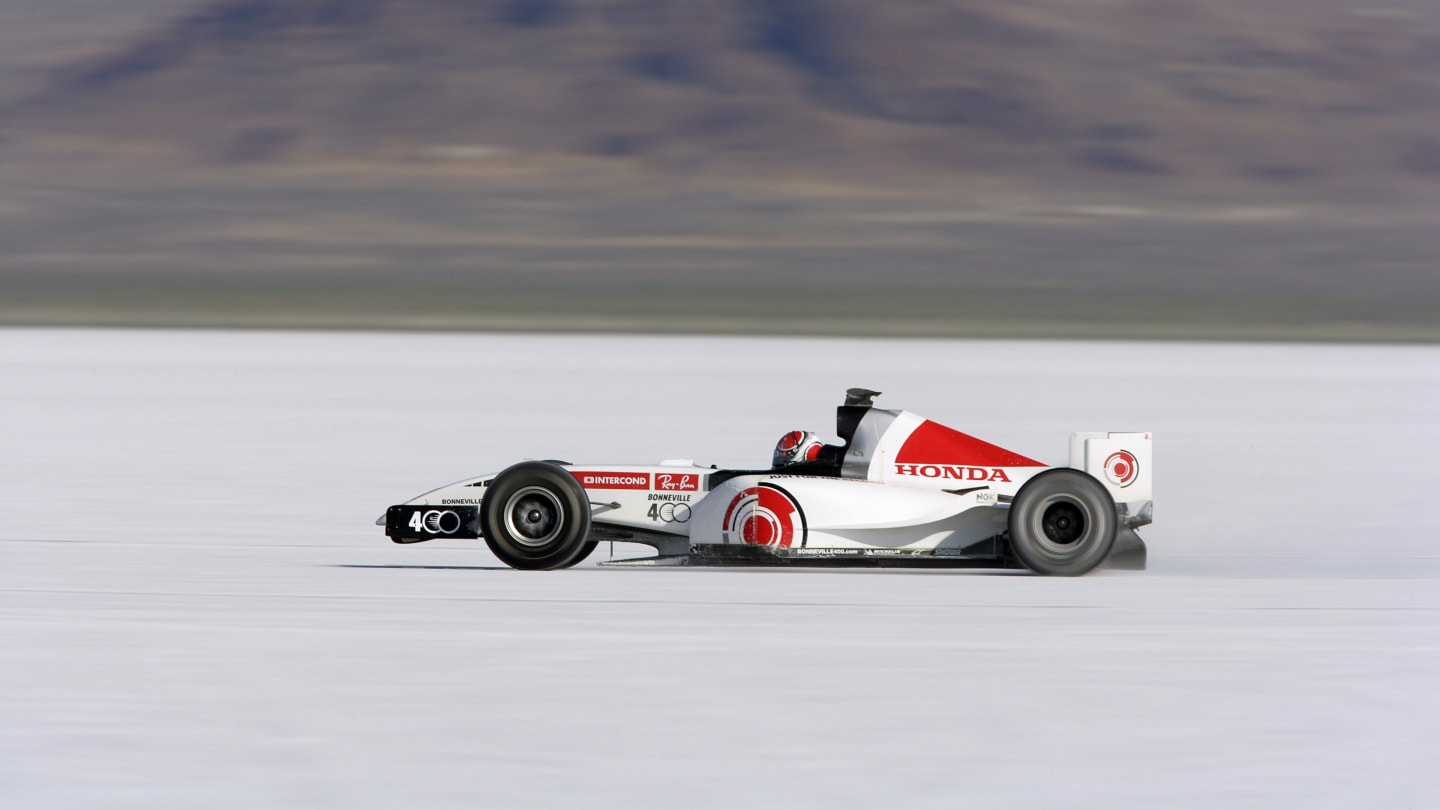
An experience like no other
“There’s no feedback,” recalls Van der Merwe. “You’re surrounded by this vast whiteness. The track was 200m wide and 11 miles long. The only way you know you’re going fast is because your helmet is getting pulled off your head and the car is screaming in seventh gear.
“We thought we were going to need something like three miles of track - but because of the low grip we needed five miles just to build up the speed, tickling the throttle, being patient. A little wheel spin might knock 5-10km/h over the timed mile.”
An FIA land speed record requires a pass over the measured mile or kilometre in both directions, the results being averaged to take wind-assistance out of the equation (hence why the 413.205km/h top speed set in Mojave didn’t count).
In a series of early morning runs at Bonneville the 007 did record one run of 400.454km/h but failed to repeat it on the return leg. At the end of the week, they had to settle for an F1 record of 397.360km/h - just shy of the mythical 400 they’d targeted.
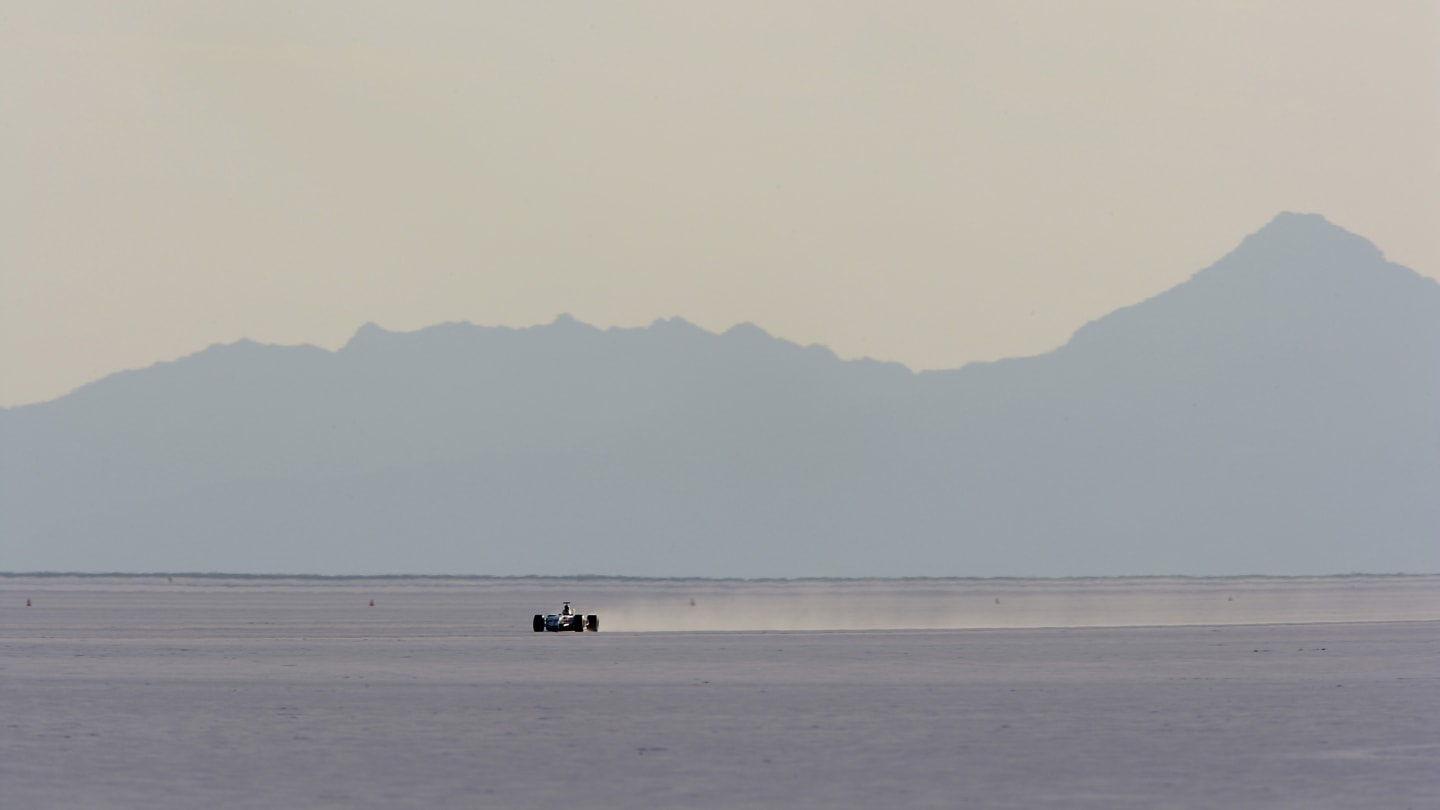
Better than expected
Far from being a disappointment, Van der Merwe looks back on the project with great affection.
“To be honest, we shouldn’t have got that close! I think we would have needed a completely different tool for the job to do 400km/h but we had a lot of fun getting really, really close - and we have the record. It was a unique project and I’m very lucky to have been part of it.
“It changed my point of view on land speed racing too. Because I was a circuit racer, at first I didn’t get it. I’d look at those 2000hp American things built in someone’s backyard and not get it. I understood that it must be fun but I couldn’t see how people became addicted to it: just driving in a straight line out on the salt, trying to find that extra tenth of an mph. I didn’t really see the point of that.
“Working on the project changed my point of view. We were 50 or 60 people and it took us two years to achieve what we achieved. You learn that what happens on the salt is the tip of the iceberg. Finding that extra tenth has maybe taken nine months of effort.
“It’s the same as running a car on the track: everyone has to give 100 percent; everyone has to optimise their little bit and, if they don’t, you’re not going to find that tenth - but when you do, it’s very satisfying. I don’t think anybody on the project looks back and thinks it was a waste of time - we all got something out of it.”

One day a driver in an F1 car might go faster than Van der Merwe - but not any time soon.
A decade on, the achievement of Honda’s Bonneville 400 project tends to fall into the same category of discussion as a live demo or a particularly glitzy launch. That’s not entirely fair. Yes it was something dreamed up by a marketing department, but equally the technical achievement of taking a (basically) standard F1 car up to those speeds deserves a great deal of credit. It’s no coincidence that no-one before or after has even attempted the same.
Share
YOU MIGHT ALSO LIKE
News ‘I’m driving at a high level’ – Alonso defends start to 2025 after Monaco power unit issue denies him maiden season points
TechnicalF1 Unlocked TECH WEEKLY: The impressive McLaren feat that allowed them to beat the heat in Monaco
Feature IT’S RACE WEEK: 5 storylines we’re excited about ahead of the 2025 Spanish Grand Prix
Feature F1 FANTASY: Strategist Selection – What’s the best line-up for the 2025 Spanish Grand Prix?





